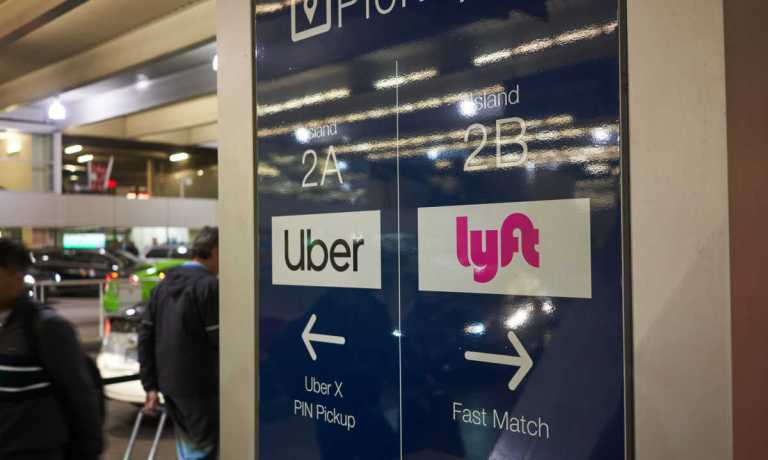Lyft Stock Decline Draws Sharp Contrast to Uber’s Broader Platform Strategy

The Uber versus Lyft battle illuminates a stark reality as the pandemic recedes:
The broader the platform — the more opportunity for users (and drivers) to pivot between activities without leaving the ecosystem — the better the revenue tailwind.
At least for now, the stocks tell the tale, as investors weigh in. At this writing, Lyft shares are down 30% in intraday trading on Friday (Feb. 10), having posted disappointing results and guidance after the market closed Thursday.
Uber, by way of contrast, has seen its shares bounce a bit after earnings and still, even with the tech downdraft, remain slightly higher into the end of the week.
Paths Are Diverging
Through the years, the two companies have had a central, core business: ride-hailing, of course.
But while Lyft has been focused on mobility, the art and science of getting people from one place to another, Uber has built out a relatively more extensible platform, adding food delivery and freight to the mix, cross-pollinating its offerings and diversifying its revenue streams.
Recent earnings from both companies show that they’re enjoying the snapback in passenger demand for ride-hailing and ridesharing. As noted in our earnings coverage this past week, the company said that its trips growth was up 19% to 2.1 billion; the monthly trips per active users grew to 5.4, where it had been 5.3 in the third quarter and five trips in the year-ago period. Lyft reported in its own results that active riders were up 9% year on year to 20.4 million. The recovery helped Lyft grow its top line by 21% to $1.2 billion in the most recent quarter.
But Uber’s top line growth far outpaced Lyft’s, logging a roughly 50% gain, because there are a number of services and offerings in place that are complementary to ride-hailing. The bookings boost enjoyed by the firm (up 26% in the aggregate), we noted, has come as members have been, increasingly, getting things delivered to the doorstep (where bookings were up 14%).
Management pointed on the call to what it called the “power of the platform,” driven by the cross-promotions between mobility and delivery. “We’re essentially sending free, or cheaper, traffic from one platform to another,” said CEO Dara Khosrowshahi.
Seasonality and Pricing Pressure
Lyft is actually forecasting a revenue decline in the current quarter, stating that revenues in the period will be about $975 million, down roughly $200 million. There’s seasonality in the mix, and management pointed on the call to the fact that colder weather will lead to a decline in ride-hailing, and in user demand for bikes and scooters to get around.
In addition, management said that that its Prime Time pricing — which boosts driver income and company revenues as demand outstrips supply — would, in the words of CEO Peter Green, be “coming down dramatically because of increased driver supply.” And overall, he said during the call, base pricing is being reduced “to remain competitive” within the mobility segment.
Uber is competitor number one, so to speak, and arguably has the ability to adjust its own pricing as the battle for ridership continues. In the meantime, Uber can shift the “supply” side of the equation — the drivers — to satisfy end consumers’ demands across business lines (delivery and freight), and to keep drivers earning even if mobility hits speed bumps.
PYMNTS research shows a significant percentage of consumers would love to take advantage of super apps that combine a range of daily activities through a single, “hub” point of contact, and Uber’s cross-selling offers proof positive of that appeal.
The old adage that holds true in investing also may hold true when it comes to platforms: Diversification pays off.